‘To lose one parent may be regarded as a misfortune; to lose both looks like carelessness.’
– Lady Bracknell in The Importance of Being Earnest,
by Oscar Wilde, 1895
The most dangerous airline in the history of aviation was run by an Australian. Its short and deadly career is a case study in the importance of the non-technical skills its chief executive completely lacked.
1998, Cerro Tupungato, the Andes: Perhaps it was the thin cold air, labouring thought as much as breathing, that caused the climber to ask, ‘How did they get a car up here?’ before bursting into wheezy laughter.
Before him on a pedestal of glacial ice was an engine, smashed, but with part of the maker’s name still visible: ‘OLLS-ROYCE.’ At the limit of their endurance, 2 Argentinian mountaineers had unwittingly solved one of the 20th century’s more enduring aviation mysteries.
The aircraft was an Avro Lancastrian, named Star Dust, belonging to British South American Airways (BSAA). This passenger-carrying variant of the World War II Lancaster bomber was flying from Buenos Aires, Argentina, to Santiago, Chile, on the final leg of a scheduled service that had taken off from Heathrow in England on 29 July 1947. On 2 August, its radio operator sent a morse code message that the aircraft would arrive within minutes. Nothing more was seen or heard of Star Dust for 51 years.
Six passengers and 5 crew were killed, in what appears to have been a controlled flight into terrain, probably caused by the aircraft encountering an unforecast (and at that time largely unknown) jet stream wind at high altitude, which disrupted the dead reckoning navigation calculations.
As evidenced by the radio message, the crew descended toward what they thought was the coastal plain of Chile, but in fact dropped down on the high peaks of the Andes.
British South American Airways had flown its first service only 19 months earlier, on 1 January 1946, but this was not its first fatal crash. On 7 September 1946, an Avro York (a passenger/freight aircraft based on the Lancaster) had crashed after take‑off at Bathurst (now called Banjul) in The Gambia, west Africa. Its pilot had 5 hours 3 minutes time on type, just over 1 hour of that at night. On take-off in darkness, at 350 kg more than the aircraft’s maximum take-off weight of 30,884 kg, it crashed, ending the pilot’s first revenue flight on type and killing all 24 on board.
On 13 April 1947, another York crashed in fog after its third landing attempt at Dakar, in Senegal, west Africa. Six of the 9 passengers died, although all the crew survived. The controller had suggested a diversion to Thies, 60 km inland but the pilot, who was also navigator, did not have this airport marked on his chart. In London, questions began to be asked.
The Australian connection
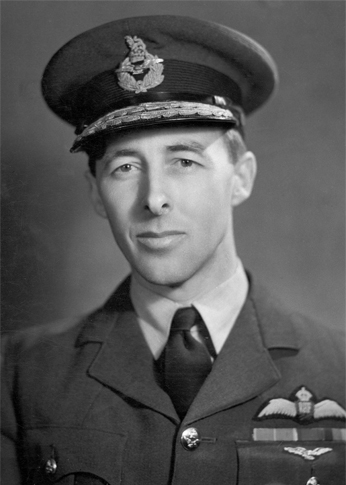
Image: Australian War Memorial SUK12633.
For a man who literally wrote the book on aircraft navigation and set records that still stand in 2021, Donald Bennett (1910–1986) is surprisingly obscure. He has, for example, no place in the Australian Aviation Hall of Fame. Bennett, or his ghost, might not be surprised at this oversight. He was never a man who set much store in organisations.
Donald Clifford Tyndall Bennett was born near Toowoomba, Queensland, into a prosperous pastoral family. Another local family, the Fyshes, were acquaintances. Like their son, Hudson, who founded Qantas, Bennett sought his fortune in the skies. He joined the RAAF aged 20 and was transferred to the British RAF the next year. In Britain, on a flying boat squadron he developed his abilities as a navigator, becoming an instructor by 1933. In 1936 he wrote The Complete Air Navigator while on honeymoon, on a ship back to Australia. By this time he had resigned from the RAF and was flying for the British airline Imperial Airways. He set a distance record for seaplanes that still stands, from Scotland to South Africa, spending 42 hours in the cockpit.
In 1936 he wrote The Complete Air Navigator while on honeymoon on a ship back to Australia.
In the Second World War he established the Atlantic Ferry organisation for delivering new American warplanes to Britain, achieving the thought-to-be-impossible feat of crossing the North Atlantic Ocean in winter. ‘Strange as it may seem, everybody got over,’ he said in 1967 at a dedication of a memorial to the service.
He was shot down on a raid against the German battleship Tirpitz but evaded capture, returning to Britain via Sweden, and established the precision target-marking arm of RAF Bomber Command, the Pathfinder Force.
Bennett was personally very brave. As leader of the Pathfinders, he routinely defied the ban on senior officers flying in combat. But he was also lucky; he insisted his subordinates at Pathfinders headquarters also fly over Germany themselves from time to time, and several of them were killed. And his wartime exploits followed a pattern, repeated several decades later by the brilliant mavericks of the Silicon Valley computer industry – do something considered impossible, get into feuds with superiors or backers about administrative details and move on to another impressive feat.
The chief of RAF Bomber Command, Sir Arthur Harris, said of Bennett, ‘He could not suffer fools gladly and by his own high standards there were many fools.’ The Australian Dictionary of Biography raises a scholarly eyebrow at his ‘impatient, dictatorial and pedantic style of command’ and Jay Rayner, who in 2001 wrote a book, Star Dust Falling, about the Tupungato crash and its aftermath said,’ Some people are suited to war. They function better in a world bound by orders and commands. Don Bennett was one of them. Here in this pared down society his lack of social skills became a strength.’
At the end of the war Bennett returned to civilian life as the only commander of an air force group not to be knighted. After an unsuccessful attempt at politics, he turned to civil aviation as the first chief executive of the newly founded British South American Airways. In this role his wartime virtues transmuted into deadly vices. Sixty of BSAA’s aircrew and staff came from the Pathfinders, were loyal to Bennett and used to his management style and its underlying assumptions. Following him was a sign they shared his values.
A non-Pathfinders appointment was BSAA’s chief pilot and operations manager, Gordon Store, whose experience included working with Bennett on the Atlantic Ferry. In Bennett’s authorised biography, Store is described as ‘a solid deliberate plodder’ in contrast to his ‘quick thinking, swift acting,’ chief, despite Store having what biographer Alan Bramson concedes was ‘an outstanding record of safety’.
Among Store’s transgressions was his support for an unpopular idea among ex-Pathfinder crews – simulator and IFR training. Store also pressed for the use of checklists but experienced resistance from some pilots, at least one of whom refused outright to use them. Bennett offered ‘qualified support,’ according to his biography.
Bennett personally flew by simple mnemonics rather than checklists. These failed him on at least 2 occasions. It was his edict that BSAA aircraft fly a company flag while taxiing. On one flight he forgot to take it down before take-off – it was retrieved (whether on descent or taxi-in is not recorded) ‘with great difficulty’ by the first officer to avoid the spectacle of arriving with a tattered flag.
During the Berlin Airlift, Bennett took off in an aircraft with the elevator gust locks engaged.
More seriously, during the Berlin Airlift, Bennett took off in an aircraft with the elevator gust locks engaged. In a stupendous feat of skill, he controlled pitch using the elevator trim tabs and landed. He asserted to his biographer Bramson how the ‘elevator locks had re-engaged themselves’, which would have been a unique event in aviation. His documented hostility to seatbelts seems a mere peccadillo by comparison.
Among Bennett’s leadership maxims was ‘I never asked anyone to do something I would not do myself.’ His virtuosity as a pilot made this a less than useful approach. During the war, on a day when, in biographer Bramson’s phrase, ‘even the birds were walking’, Bennett arrived at a Pathfinder training base where all crews were stood down. Incensed, he flew a circuit in a de Havilland Mosquito, disappearing almost immediately into the low cloud. A few minutes later the Mosquito emerged and Bennett declared, ‘there’s nothing wrong with the weather – get airborne.’ At a time when, in Bramson’s words, ‘1000‑hour pilots were regarded as a race apart’, Bennett had 9000 hours. ‘What was easy for him assumed mammoth proportions to most other wartime pilots,’ Bramson says.
Fatigue was managed as it had been in wartime; that is to say not at all. The London-Santiago route involved 24 flying hours over 3 days, in brutally noisy unpressurised aircraft, all flown by the same crew. ‘There were no crew changes – such periods on duty would never be considered today by any airline. In 1946 it was considered quite normal,’ Bramson writes. Pilots were dual qualified as navigators and expected to do both jobs. And Bennett’s views on equipment were coloured by strident nationalism.
At a time when most airlines including Qantas were lobbying and looking for loopholes in import regulations so they could buy advanced and proven American aircraft such as the Lockheed Constellation, Bennet declared British converted bombers to be superior. This bias extended to removing US-made radio direction finder instruments from the instrument panels of new Lancastrians. The older ‘twitcher’ indicator was all that was needed, Bennett insisted.
The Ministry awakes
While researching Star Dust Falling, Rayner came across a British government file that had been sealed until 2024. He lobbied, successfully, to have it opened. In its pages he found a story of official disquiet at the example being set by a revered war hero. Diplomats were reporting outrage in foreign cities caused by BSAA aircraft ignoring procedure to make low landing approaches, declaring fuel emergencies almost as a matter of course, or refusing to transport the bodies of people killed in previous BSAA crashes. Bennet was summoned to the Air Ministry. There he told official Peter Masefield, ‘We’ve had fewer casualties than we did in the Pathfinders.’
In its pages he found a story of official disquiet at the example being set by a revered war hero.
Masefield (later Sir Peter) was not the sort of civil servant to be overawed by a war hero. For one thing, he had not always been a civil servant. Possessing the unusual vocational combination of engineering and journalism, Masefield had been rejected by the RAF for his eyesight but had volunteered to fly with the US Eighth Air Force in bombing missions over Germany while retaining his career in journalism. The Air Ministry recruited him after he wrote a scathing story about British aircraft production. He now wrote a scathing memo. But Bennett survived. It took another disaster to remove him.
On 30 January 1948, a BSAA Avro Tudor, Star Tiger, disappeared without trace over the Atlantic Ocean on a flight between the Azores and Bermuda. The Air Ministry grounded the Tudor, infuriating Bennett, who wrote a newspaper column condemning the decision. This public disloyalty was too much and the airline’s board removed him.
Pilot Peter Duffey, who later flew the pioneering Comet I and supersonic Concorde airliners, joined BSAA after Bennett’s departure. ‘The general character of BSAA operations during my period of service was of an airline poised to become a very professional force, hampered by financial stringency and the wrong aircraft types,’ he writes in his autobiography. ‘Contagious enthusiasm existed at all levels. Experience was spread thinly … ’ Bennett had created a ‘pseudo-squadron atmosphere and did not discourage those who wanted to get the job done, even if this meant venturing into areas that perhaps might seem questionable today.’
Disasters continued after Bennett’s departure. Another Tudor, Star Aerial, disappeared on 17 January 1949 between Bermuda and Jamaica. Bennett, who had already been pushing unfounded theories that Star Tiger had been sabotaged, might have claimed he bore no responsibility for the crash of Star Aerial but, as Rayner notes, ‘the counterargument would have been the endurance of the culture instilled into the airline by Bennett.’
Duffey, who flew the Tudor, has a theory drawn from personal experience for its 2 unexplained losses. The aircraft used Janitrol petrol-burning heaters to heat the cabin. These were controlled by an airspeed-operated pressure switch, which often failed. ‘It became the practice for engineers at ground stations to short it out from the ignition circuit [to allow the heater to run constantly] by one means or another,’ Duffey writes. ‘A hydraulic pressure pipe ran close to this unit and the hydraulic fluid was flammable.’
Later Bennett founded a charter operation, which bought 2 Tudors and flew them in the challenging conditions of the Berlin Airlift. Meanwhile, BSAA was absorbed by its competitor, British Overseas Airways Corporation (BOAC). Possibly taking the Tudor’s good record in the Berlin Airlift into account, the Air Ministry restored its certificate to fly passengers. Bennett took full advantage of this.
On 12 March 1950, a Tudor V with 83 people on board took off from Dublin. It was the aircraft’s second revenue flight in this configuration, the first having been the outbound trip across the Irish sea 2 days earlier. The Air Registration Board had not approved the new loading instructions for the eight-seat increase in capacity, but this had not stopped the flight from taking off. On final approach to Llandow airport in Wales, the aircraft pitched up, stalled and crashed, killing 80. At the time it was the world’s worst air disaster. It emerged that the aircraft’s combination of weight and centre of gravity would have rendered the elevators ineffective at 105 knots. Bennett’s charter company was found guilty of ‘loading the Tudor in such a way that its centre of gravity was beyond the prescribed limits’.
Defenders of Bennett’s BSAA record might argue that for an airline flying long overwater sectors and crossing high mountains, a certain loss rate was to be expected. None of these applied to the crash at Llandow and, by contrast, Qantas, under pressure of war, had flown the 32‑hour route from Perth to Sri Lanka nonstop 271 times without losing a single aircraft.
The file Rayner uncovered had included a grim statistic – during Bennett’s tenure, from 1 January 1946 to the end of August 1947, BSAA had killed one passenger for every 385 they flew.
Despite taking place in a world of bombers and heroes, Bennett’s story has significant lessons, even now. You might be the best pilot, the most accurate navigator and the bravest warrior. But none of these are necessarily a qualification for the difficult, subtle and often frustrating world of management. And, if you manage a high-consequence business, such as aviation, your customers may become aware of this sad truth before you do.


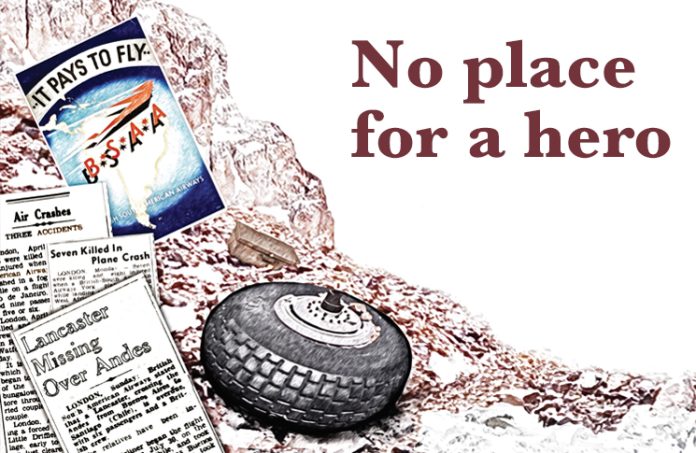
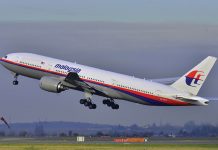
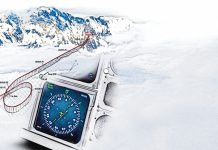
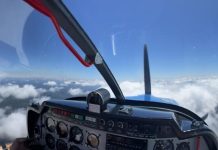

Good story, thanks
Great article well written. Thank you.